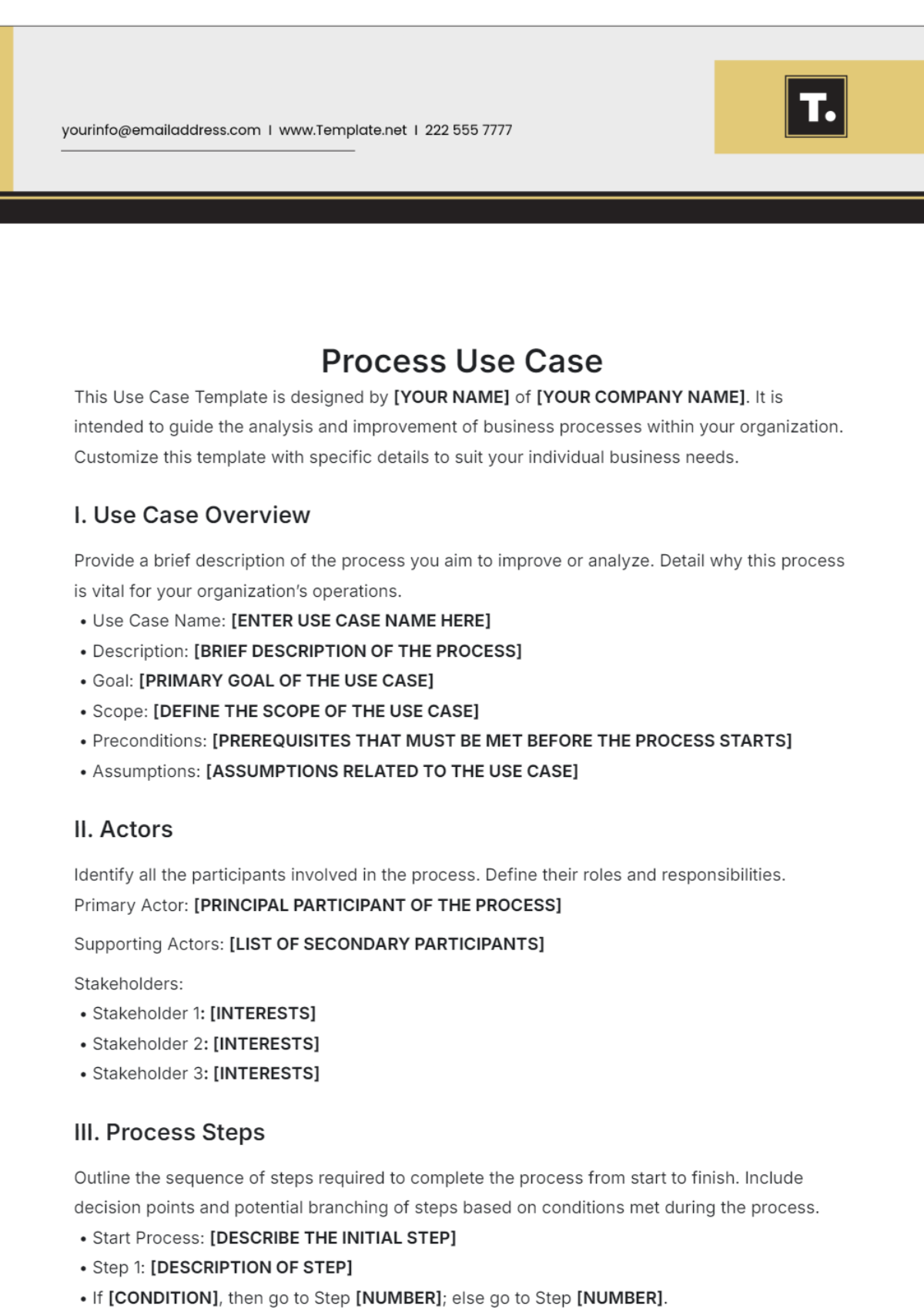Process Documentation
Prepared by: [Your Name]
1. Introduction
This document provides detailed instructions for the Employee Onboarding Process, including its purpose, scope, and steps involved. The aim is to ensure consistency and efficiency in the onboarding of new employees.
2. Purpose
The purpose of this process is to integrate new hires into the company efficiently, ensuring they are equipped with the necessary tools, knowledge, and resources to perform their roles effectively. It aims to enhance the new employee's experience and accelerate their productivity.
3. Scope
This process applies to the Human Resources Department and Hiring Managers at [Your Company Name]. It includes tasks such as orientation, equipment setup, and initial training.
4. Definitions
Onboarding: The process of integrating a new employee into an organization, including training and initial support.
Orientation: The introductory phase where new employees learn about company policies, culture, and their roles.
Training Program: A structured plan to provide new hires with the skills and knowledge required for their job.
5. Roles and Responsibilities
HR Manager: Responsible for coordinating the onboarding process, scheduling orientation, and ensuring all necessary documentation is completed.
Hiring Manager: Responsible for providing job-specific training and introducing the new hire to their team.
IT Support: Responsible for setting up equipment, granting system access, and providing technical support.
6. Process Steps
Step 1: Pre-Onboarding Preparation
Description: Prepare and review onboarding materials, schedule orientation sessions, and ensure all required equipment is ordered and ready.
Responsible Party: HR Manager
Tools/Resources Needed: Onboarding checklist, employee handbook, IT equipment order form
Output: All materials and equipment ready for new employee’s first day
Step 2: Orientation
Description: Conduct an orientation session covering company policies, benefits, and organizational structure. Introduce the new employee to key personnel.
Responsible Party: HR Manager
Tools/Resources Needed: Presentation slides, orientation handbook, company tour
Output: New employee understands company culture and their role within the organization
Step 3: Equipment and System Setup
Description: Set up the new employee’s workstation, configure email accounts, and grant access to necessary software and systems.
Responsible Party: IT Support
Tools/Resources Needed: Computer, email configuration tools, system access permissions
Output: New employee has a fully functional workstation and access to all required systems
Step 4: Job-Specific Training
Description: Provide training on specific job duties, responsibilities, and tools used in the role. Schedule follow-up sessions if necessary.
Responsible Party: Hiring Manager
Tools/Resources Needed: Training materials, job-specific software, hands-on training sessions
Output: New employee is trained and confident in performing their job duties
Step 5: Follow-Up and Feedback
Description: Conduct a follow-up meeting to address any questions or concerns the new employee may have and gather feedback on the onboarding process.
Responsible Party: HR Manager
Tools/Resources Needed: Feedback survey, follow-up meeting agenda
Output: Collected feedback and addressed any issues or concerns
7. Key Performance Indicators (KPIs)
Completion Rate: Percentage of new hires who complete the onboarding process within the first week (Target: 100%).
Employee Satisfaction: Average rating on the onboarding feedback survey (Target: 4.5/5).
Time to Productivity: Average time taken for new hires to reach full productivity (Target: 30 days).
8. Documentation and Records
Onboarding Checklist: Stored in the HR shared drive, accessible to HR Manager.
Employee Handbook: Available online and in print, distributed during orientation.
Training Records: Maintained in the Learning Management System (LMS).
9. Review and Revision
This process document will be reviewed annually and updated as needed to ensure accuracy and relevance. The next review is scheduled for August 2025.
10. References
[Your Company Name] Employee Handbook: Available on the company intranet.
HR Policy Manual: HR Policy Manual








